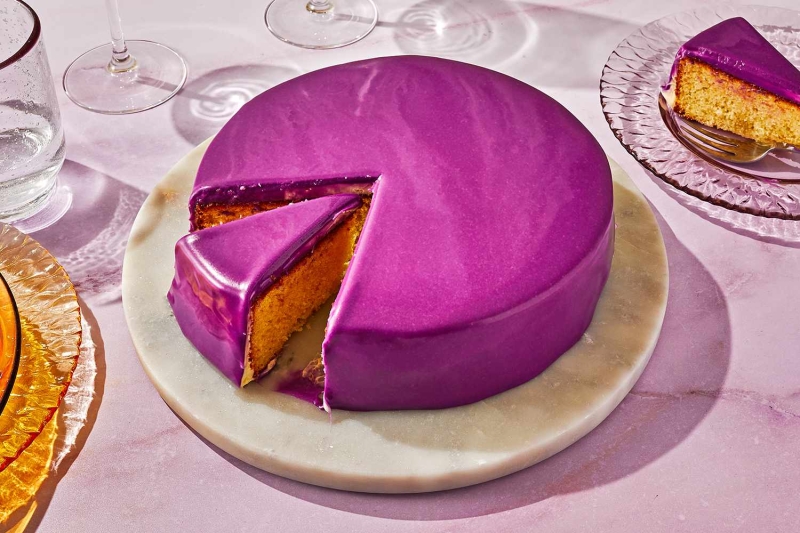The checklist and tips you need for pastry perfection
Prep: 20 mins
Cook: 5 mins
Cool: 30 mins
Total: 55 mins
Servings: 8 to 10
Yield: 1 1/2 quarts
Mirror, mirror, mirror glaze, which is the shiniest of the cakes? Unless you live under a culinary social media rock, you’ve definitely scrolled past post after post of cakes enrobed in various hues of beautifully-colored glazes—so glossy it would make your gel nails jealous. Behold the mirror glaze!
Turned into a viral sensation in 2016 by Russian pastry chef Olga Noskova, the magnificent mirror glaze game continues to hold strong. It recently started popping up on people’s radars, but glaçage miroir is actually a classic French technique that dates back for ages.
It is typically used for mousse cakes and entremets as you need a super smooth exterior to get the full reflective effect. Seemingly intimidating to make, it is quite simple. The trick is pouring it at the right temperature. With a working temperature of between 90 F to 94 F—yes, you need to have a thermometer for this one, my secret is pouring it as soon as it reads 94 F. This way once the glaze hits the cake it will still be within working range, allowing for time to smooth things out before it sets up.
So, get out your favorite gel food colors and let’s get glazing! This recipe is for the glaze only, you will need a thermometer, immersion blender, fine mesh sieve, as well as a fully assembled and frozen overnight mousse cake or entremet. We have found success using this with a buttercream cake, but you must ensure the exterior finish of buttercream is ultra smooth and the cake is thoroughly frozen.
“I love using mirror glaze on mousse cakes for a fancy, glossy finish. The end product should be shiny enough to see your reflection! This recipe was easy to follow and the white chocolate gives it a nice sweetness.” —Tracy Wilk
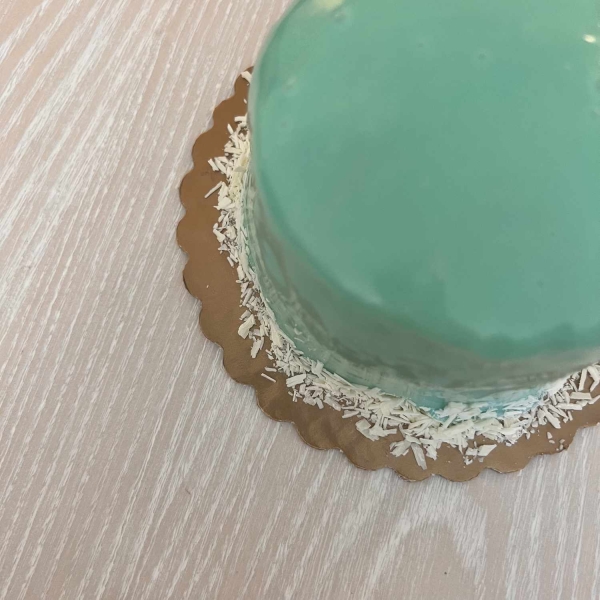
A Note From Our Recipe Tester
Ingredients
-
1 tablespoon + 2 teaspoons powdered gelatin
-
1/4 cup cold water
-
2/3 cup condensed milk
-
1/2 cup + 2 tablespoons warm water
-
1 1/2 cups granulated sugar
-
12 ounces white chocolate, finely chopped (about 2 1/3 cups)
-
1 teaspoon pure vanilla extract, optional
-
Gel food coloring, optional
-
1 frozen mousse or cake
Steps to Make It
-
Gather the ingredients
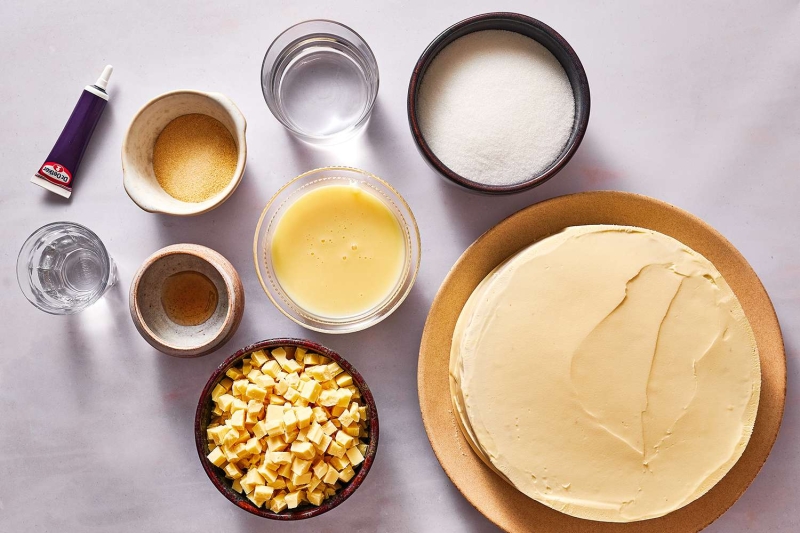
-
Bloom the powdered gelatin: Put the cold water in a small bowl. Sprinkle the powdered gelatin over the water. Quickly stir using a small whisk or fork until it starts to thicken. Set aside and let it sit to fully gel, about 5 minutes.
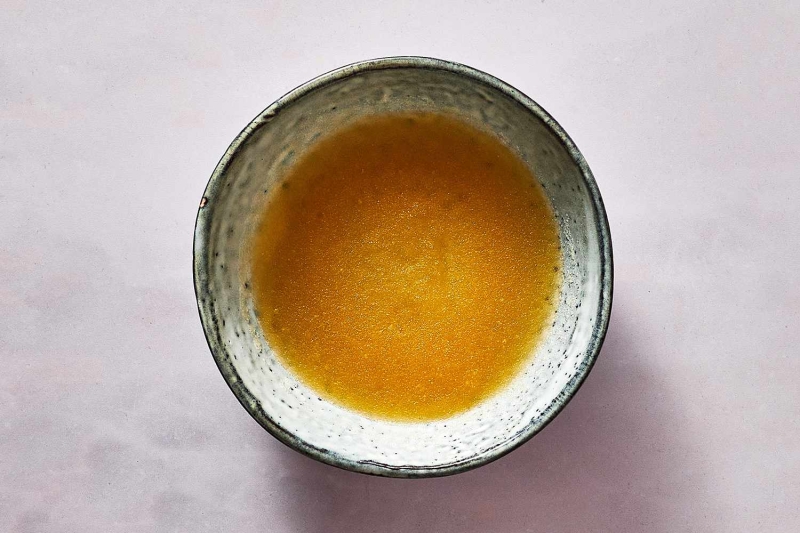
-
Meanwhile, whisk together the condensed milk, warm water, and sugar in a small pot. Bring to a simmer over medium-high heat.
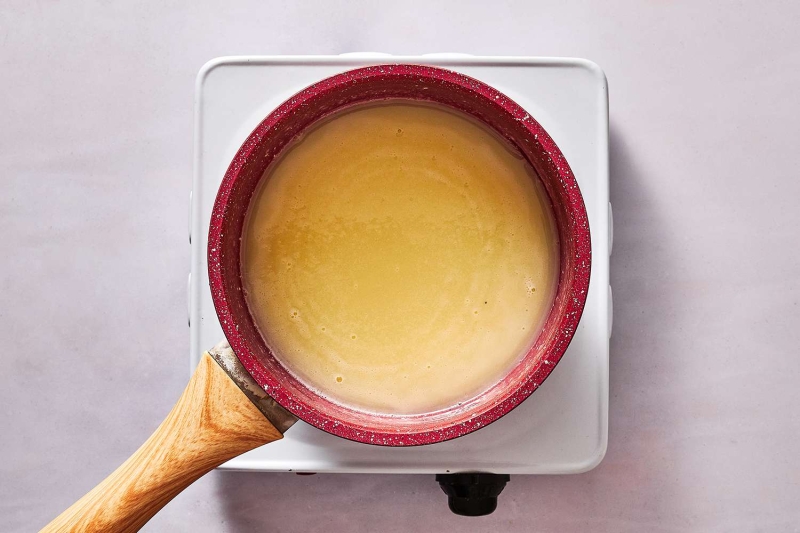
-
Once the mixture reaches a simmer, turn off the heat and whisk in the bloomed gelatin until fully dissolved and no clumps remain.

-
Let the mixture sit for 2 minutes, then whisk together until smooth. Whisk in the vanilla extract, if using.
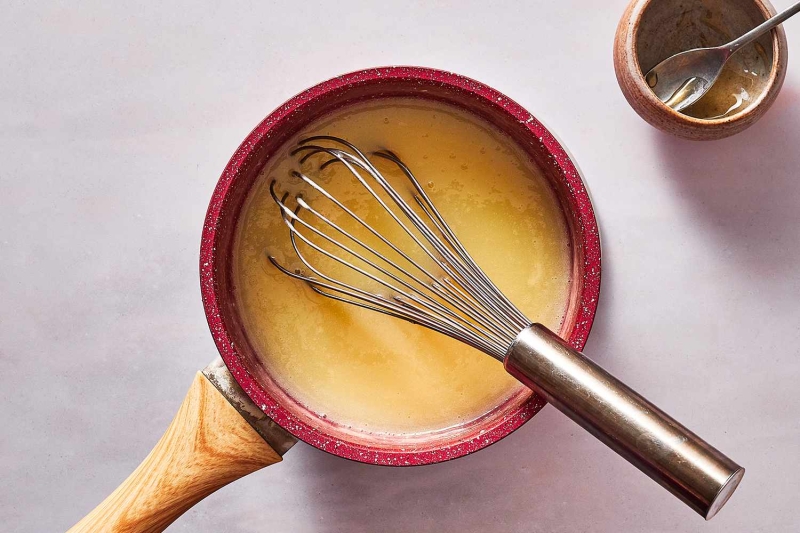
-
Place the white chocolate in a bowl. Pour the hot liquid mixture through a fine mesh sieve over the chocolate.
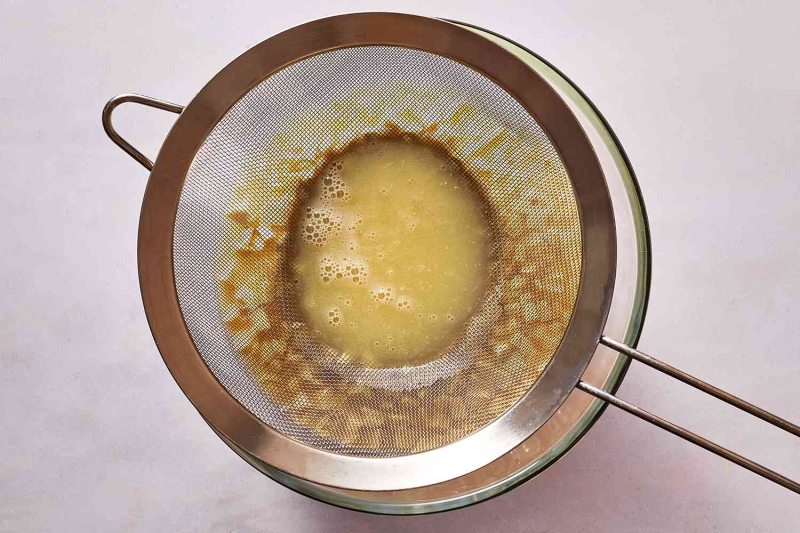
-
Completely submerge the immersion blender into the glaze and blend without raising above the glaze to prevent air bubbles from forming. If using food color, add a couple drops at a time until desired color is reached. Blend thoroughly.
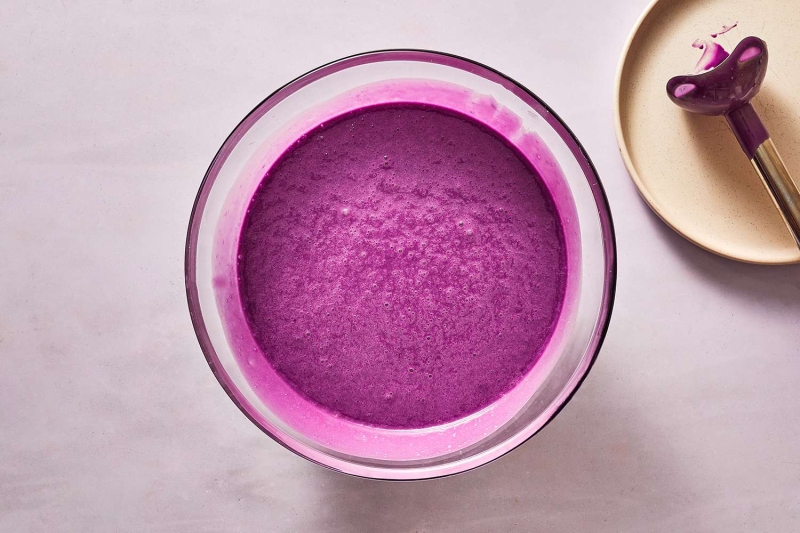
-
Transfer the glaze into any type of pouring vessel like a heat-proof quart container or heat-proof liquid measuring cup. Let it sit, giving it a stir every 5 minutes until the glaze reaches 90 to 94 F on an instant read thermometer.
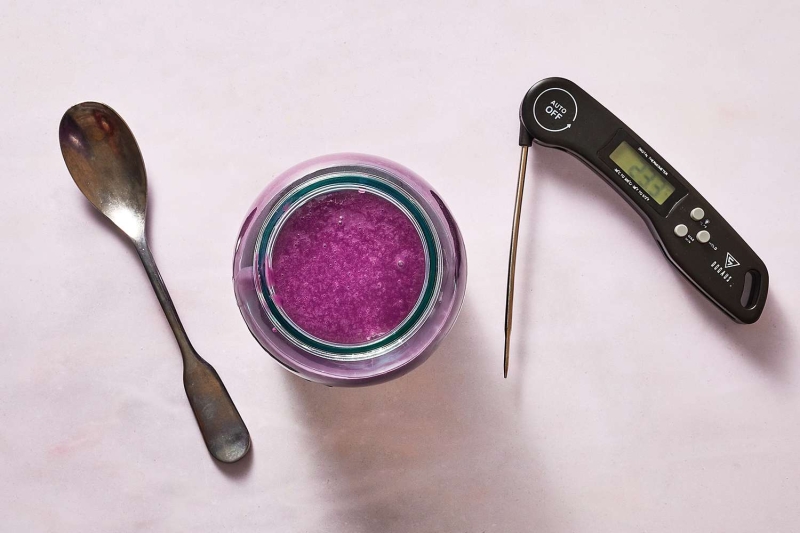
-
While you wait for the glaze to cool, set up your glazing station. Line a sheet tray bigger than your cake with a piece of parchment paper. Place a pint container or bowl upside down on top of the parchment. Use something sturdy as this will act as a platform for your cake and make it easier to clean the edges once glazed.
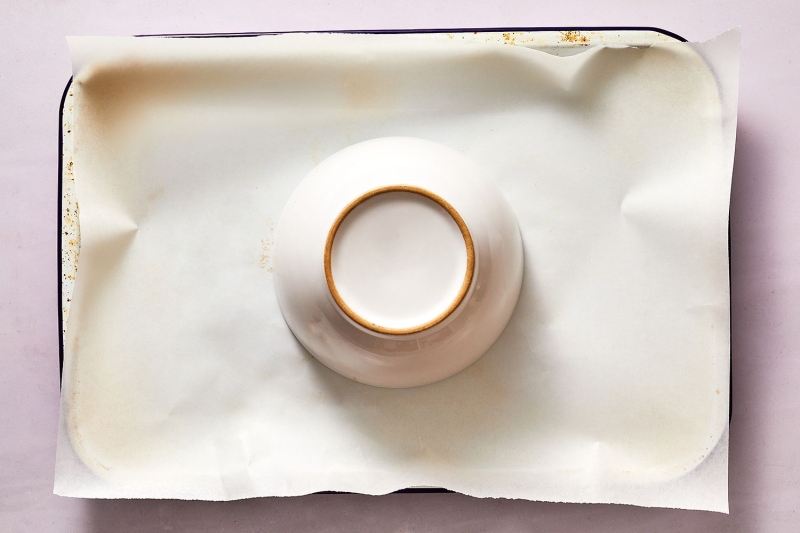
-
Once the glaze has reached 94 F, take your cake out of the freezer and place on top of the upside-down bowl or whatever you are using as your "platform." Pour the glaze over the cake starting from the center. Continue to pour in a circular motion outward. Once all the sides are coated gently, tap the sheet tray on the counter to shake off any excess glaze.
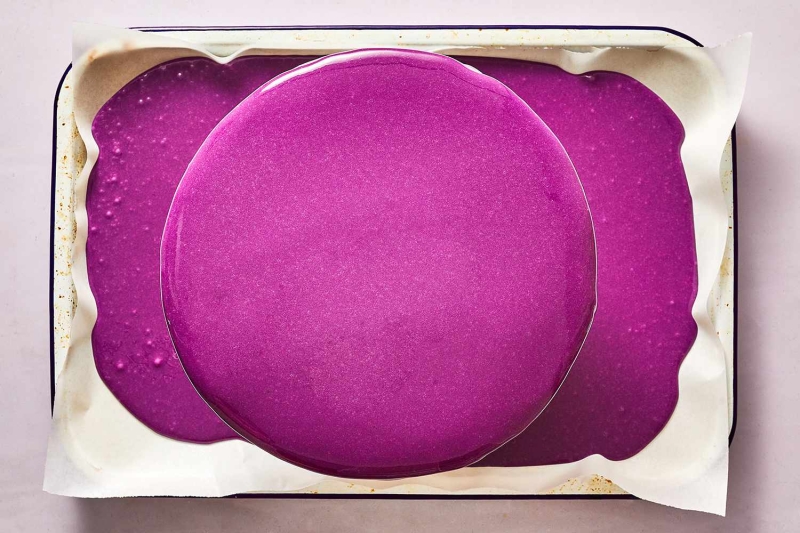
-
Let the cake sit for 1 to 2 minutes until the glaze is completely set. Use a small paring knife to trim off any glaze drippage and then use a large offset spatula to gently transfer the cake to your serving platter.
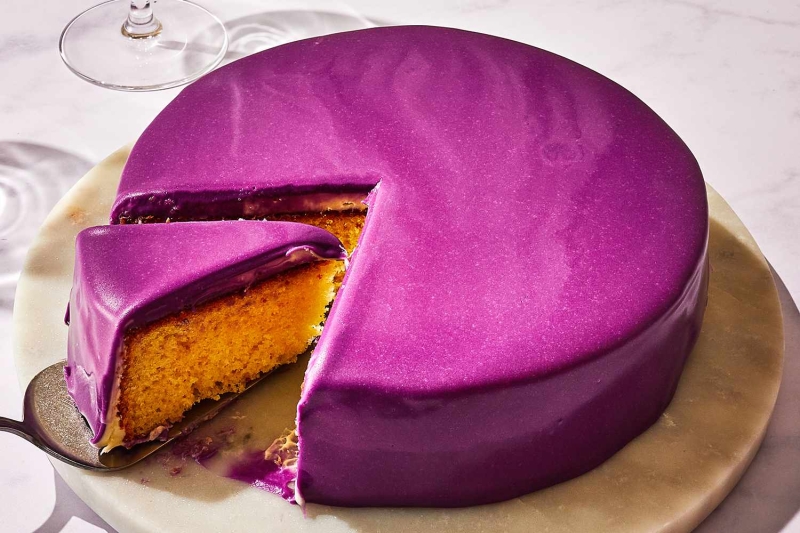
Recipe Tips
Feel free to have fun with your mirror glaze, get creative by trying out various techniques:
- Divide the mirror glaze into 3 or more vessels for pouring and use a different color in each one. From here, you can either pour the glazes separately one on top of the other in varying amounts and different motions like stripes or abstract directly on top of the cake OR you can pour a little of a second color into the vessel of your base color, then a third on top of the second, a fourth, and so on.
- Do not mix the colors together in the pitcher, just pour it directly onto the cake once you have all your colors in any pattern of your choosing for a cool marbling effect.
- Try using a hair dryer! Once you have poured your glaze in the colors and pattern of your choosing, use a hair dryer with a flat nozzle attachment and blow cool air at a 45° angle in one direction or more for an abstract look.
Storage
- Mirror glaze can be made in advance and reheated. You can also scrape any extra mirror glaze off the parchment paper and save it in an airtight container in the fridge for up to 2 weeks.
- Just remember if you are using multiple colors, it may not be a desirable color after it all gets mixed together.
- To reheat, place the glaze in the microwave and heat at half power in 30 second increments, whisking and breaking it up in between heating until it’s all melted down. Use the immersion blender to give it a quick blend to make sure it’s smooth before using. And don’t forget to take the temperature!
| Nutrition Facts | |
|---|---|
| Servings: 8 to 10 | |
| Amount per serving | |
| Calories | 394 |
| % Daily Value* | |
| Total Fat 14g | 18% |
| Saturated Fat 8g | 40% |
| Cholesterol 19mg | 6% |
| Sodium 77mg | 3% |
| Total Carbohydrate 65g | 24% |
| Dietary Fiber 0g | 0% |
| Total Sugars 64g | |
| Protein 4g | |
| Vitamin C 1mg | 4% |
| Calcium 131mg | 10% |
| Iron 0mg | 1% |
| Potassium 178mg | 4% |
| *The % Daily Value (DV) tells you how much a nutrient in a food serving contributes to a daily diet. 2,000 calories a day is used for general nutrition advice. | |
